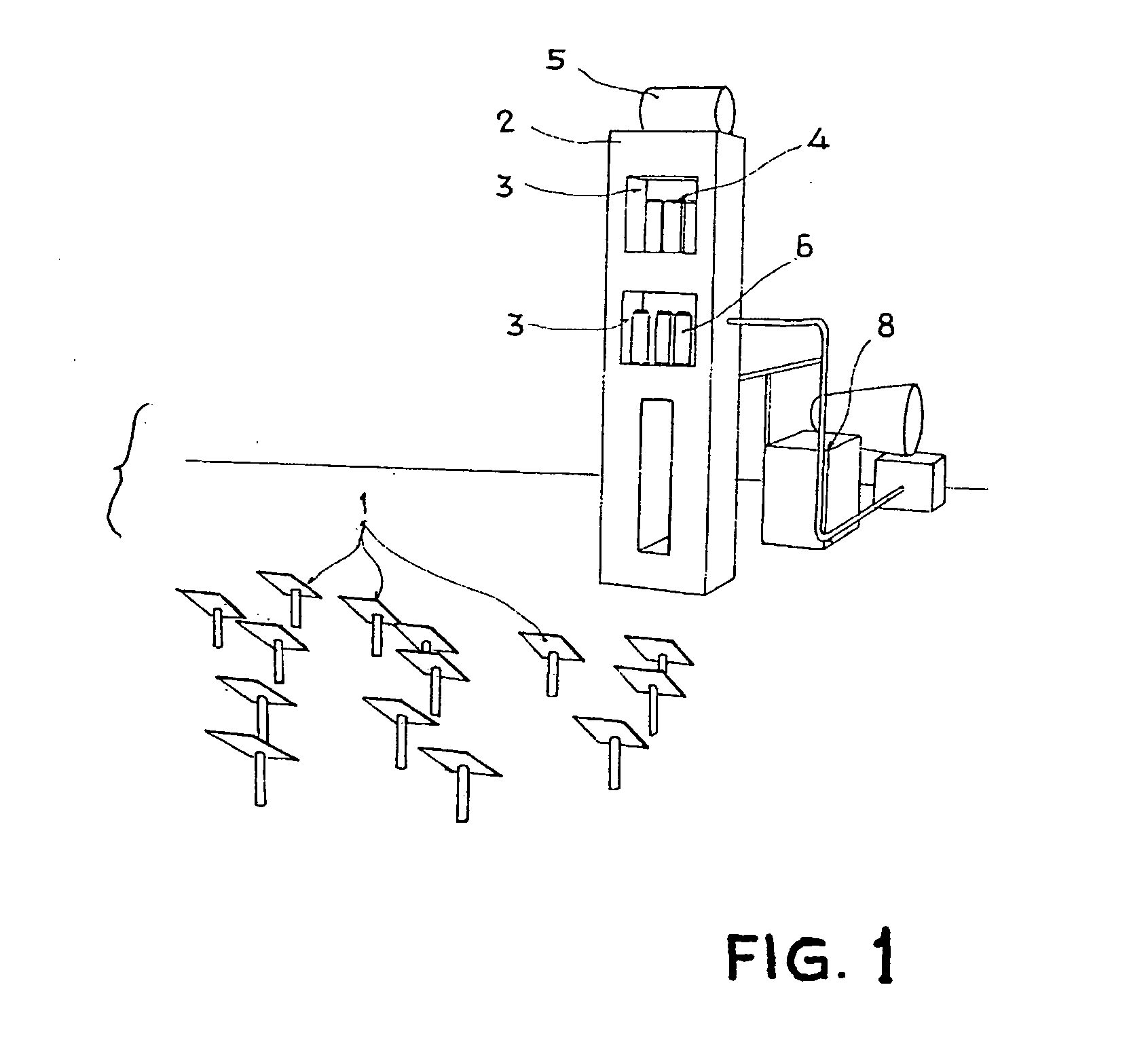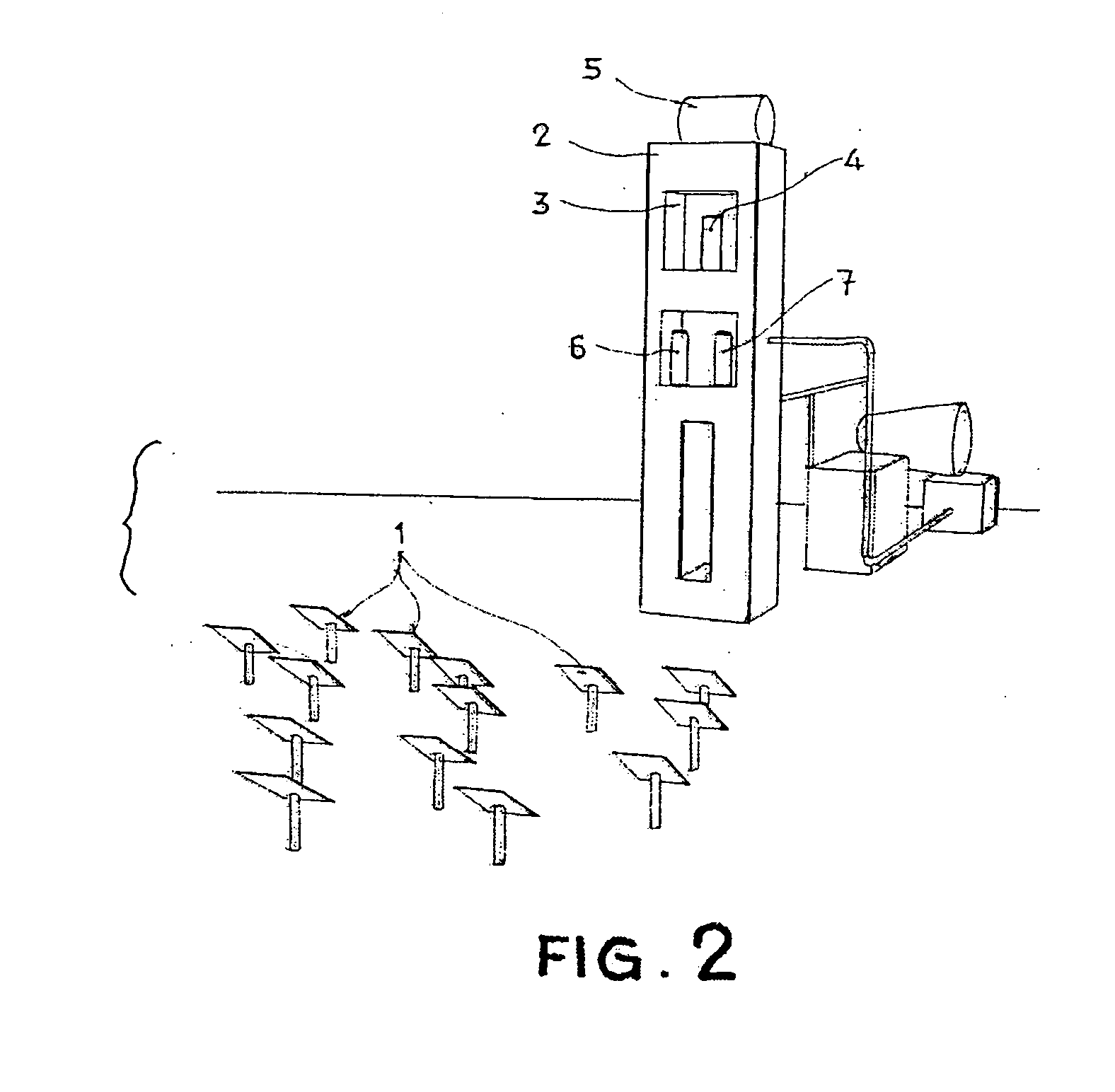Solar concentration plant for the production of superheated steam
a solar energy and concentration plant technology, applied in steam generation plants, solar heat generation, lighting and heating apparatus, etc., can solve the problems of difficult solar technology for the production of superheated steam, affecting the operation of the system, and destroying practically all its potential for work
- Summary
- Abstract
- Description
- Claims
- Application Information
AI Technical Summary
Benefits of technology
Problems solved by technology
Method used
Image
Examples
Embodiment Construction
[0015]The present invention relates to a plant and a procedure which uses water / steam as a heat-carrying fluid for the production of superheated steam in any thermodynamic cycle or process heat exploitation system, comprised of an evaporation subsystem where saturated steam is produced under the conditions of pressure of the system, and a superheater subsystem where the steam reaches the required conditions of pressure and temperature for entry into the turbine. With regard to other preceding proposals which located the superheater subsystem modules in the very close proximity of (when not superimposed on) the evaporator subsystem modules, the strategic development proposed herein is based on the physical and independent separation of the evaporator and the superheater.
[0016]The fact of separating the evaporation stage from that of superheating reduces the technological risk as, due to there not being a change of phase in the receiver itself, neither are there any problems of high t...
PUM
 Login to View More
Login to View More Abstract
Description
Claims
Application Information
 Login to View More
Login to View More - R&D
- Intellectual Property
- Life Sciences
- Materials
- Tech Scout
- Unparalleled Data Quality
- Higher Quality Content
- 60% Fewer Hallucinations
Browse by: Latest US Patents, China's latest patents, Technical Efficacy Thesaurus, Application Domain, Technology Topic, Popular Technical Reports.
© 2025 PatSnap. All rights reserved.Legal|Privacy policy|Modern Slavery Act Transparency Statement|Sitemap|About US| Contact US: help@patsnap.com



